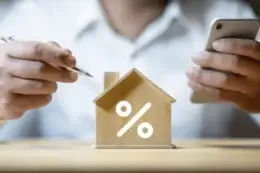
The growing wealth gap between people who purchased property before and after the pandemic has been laid bare, with new research from Compare the Market showing Aussies who bought at the market peak could be $671 worse off every month compared to people who entered the market just three years earlier.
A homebuyer from Sydney, who purchased a house at the median price of $1,127,723* in April 2022 with a fixed rate of 2.2% could be looking at minimum monthly repayments that are $2,247 dearer when their rate expires next year.
Yet someone who purchased a house for the median price of $780,672 just three years earlier may have seen repayments only rise $1,576 – that’s $671 less than those who purchased at the peak. On top of that, those borrowers have benefited from a significant rise in equity, with the median house price in Sydney now just shy of its previous record.
Sydney 2022 price peak vs 2019 dip
| April 2022 peak | April 2019 dip | |
| Median house price | $1,127,723 | $780,672 |
| Loan minus amount based on 20% deposit | $902,178 | $624,537 |
| Minimum monthly repayments at fixed 2.2% | $3,426 | $2,371 |
| Repayments at variable 6.45% | $5,673 | $3,927 |
| Difference | +$2,247 | +$1,576 |
David “Kochie” Koch, Compare the Market’s Economic Director, said it’s a tough pill for younger borrowers to swallow, who had not had time to accrue strong savings buffers but are now among the hardest hit.
“If you bought your home in early 2022 under the pretence that interest rates would stay low for longer, you’ve now been lumped with the short end of the stick,” Mr Koch said.
“Meanwhile, a lot of mature Australians have missed this pain altogether after selling their properties at the peak and having reaped the benefits of more equity for years.
“A lot of mature Australians have been shielded from the rate rises, and it’s already widely believed that their spending drove inflation.
“It’s time policy-makers should be asking, ‘how could the pressure be more evenly spread’.”
Mr Koch said people struggling with higher repayments should look into whether refinancing to a lower rate could help them save.
At the time of writing (14 December) there was a 0.85% difference between some of the highest and lowest advertised rates on the market. That means someone with a $750,000 loan could save up to $414 dollars a month on their repayments by making a switch.
“We urge people in mortgage pain to reduce the interest on their repayments as much as possible by shopping around for a better deal,” Mr Koch said. “When every dollar counts, 2024 should be the year of the new lender.”







